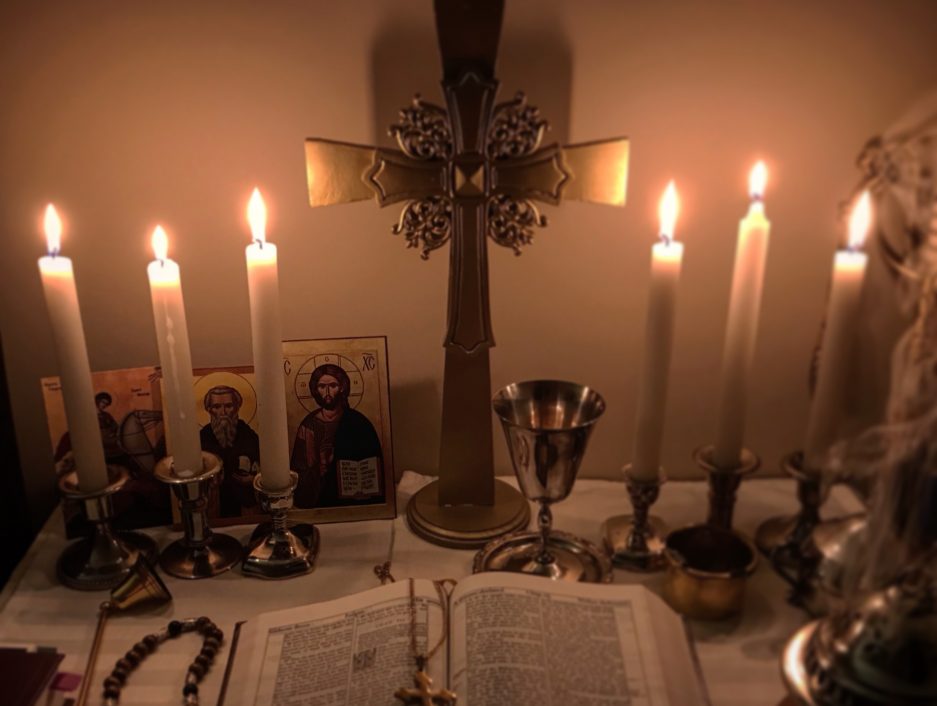
On Sunday, 22 October, 2019, I was invited by a friend to attend the local Antiochian Orthodox Church, St Antonios.
It was my first Orthodox Divine Liturgy. I thought that even though it was Orthodox, it was still a Christian church, so it couldn’t be that different from other Sunday worships. I was wrong. The key parts were there, like the Kyrie, the Epistle, the Gospel, the Creed, the Sanctus, the Lord’s Prayer, and the Consecration/Communion, but because of the other chants/hymns/prayers not found in contemporary Western liturgies, it was very hard to follow.
For those not familiar with Orthodox Worship, I’ll provide a quick summary. The Antiochian orthodox church uses the Liturgy of St. John Chrysostom on most days for the Divine Liturgy. The Divine Liturgy is divided into two parts (technically, three, but that part is for the priest and deacon and not visible to the laity), the Liturgy of the Catechumens and the Liturgy of the Faithful.
The Liturgy of the Catechumen is first part of the Divine Liturgy and is “equivalent” to the Liturgy of the Word in the Roman Catholic church and primarily focuses on the reading of the Epistle and Gospel. There are additional parts such as the Great Litany and various other hymns and prayers
The Liturgy of the Faithful is the second part of the Divine Liturgy and is “equivalent” to the Liturgy of the Eucharist in the Roman Catholic church, so this is the part that prepares and administers the Holy Communion.
One of the things that made it difficult to follow was that the priest said this own prayers and performed his own actions at the altar (separated by an ornate screen) while the cantors (group of lay people outside the sanctuary/altar area) chanted prayers/hymns at the same time. Also, they alternated between English and Arabic, making it even more difficult to follow.
This separation of the priest doing his own specific worship from the rest of the congregation was how it was done in earlier Roman Catholic masses, but over time, that distinct separation diminished.
The laity basically stood for the entire service. There were some occasions where people sat down, but most of it was done standing. There was no kneeling, bowing, or genuflecting. There was a lot of crossing oneself (in the Orthodox manner), but I couldn’t figure out when it happened.
The Orthodox practice closed communion, so only communicant orthodox could partake, and unlike the west, they make a “slurry/porridge” of (leavened) bread and wine and the priest gives it to the people using a spoon.
Because the orthodox take pre-church fasting very seriously, they would then have unconsecrated bread available for people to eat, to hold them over until lunch (the entire Divine Liturgy Service was two hours). The bread was a sweet and spiced leavened bread, almost like a cake. There was an old lady who gave us some bread while we waited for communion to be given to all communicants.
The priest’s homily was a bit more directive and forceful than what we expect in the west. The gospel was the Miraculous Catch of Fish involving Jesus and (Simon) Peter. The gist of his homily was “obey God and there will be miracles.” My interpretation of that gospel is more “trust God/have faith in God and God will deliver,” but I can see how it can be interpreted as obedience to God, especially for a culture that emphasizes obedience.
The church itself was very beautiful and ornately decorated with many icons. The church was converted from an old Anglican church and it was great that they kept the original Anglican style stained glass, though it didn’t quite fit in with the Orthodox style of decor.
The church was very well attended, all the pews were filled and there was almost no empty seats.
They did use incense and their thurible was the orthodox style (with 12 bells on the chains), thought the priest/deacon were the only people who used the thurible (there was no thurifer). The acolytes included two taperers (candle holders), a crucifer, and a liturgical fan holder.
It was an eye-opening experience, to see how differently they worship and how the church and liturgies have evolved over time. The Orthodox way is a very mystical way of worship, and I can see why some would be attracted to that way of worship, but it’s not for me. I’m going to stick with Anglicanism.
